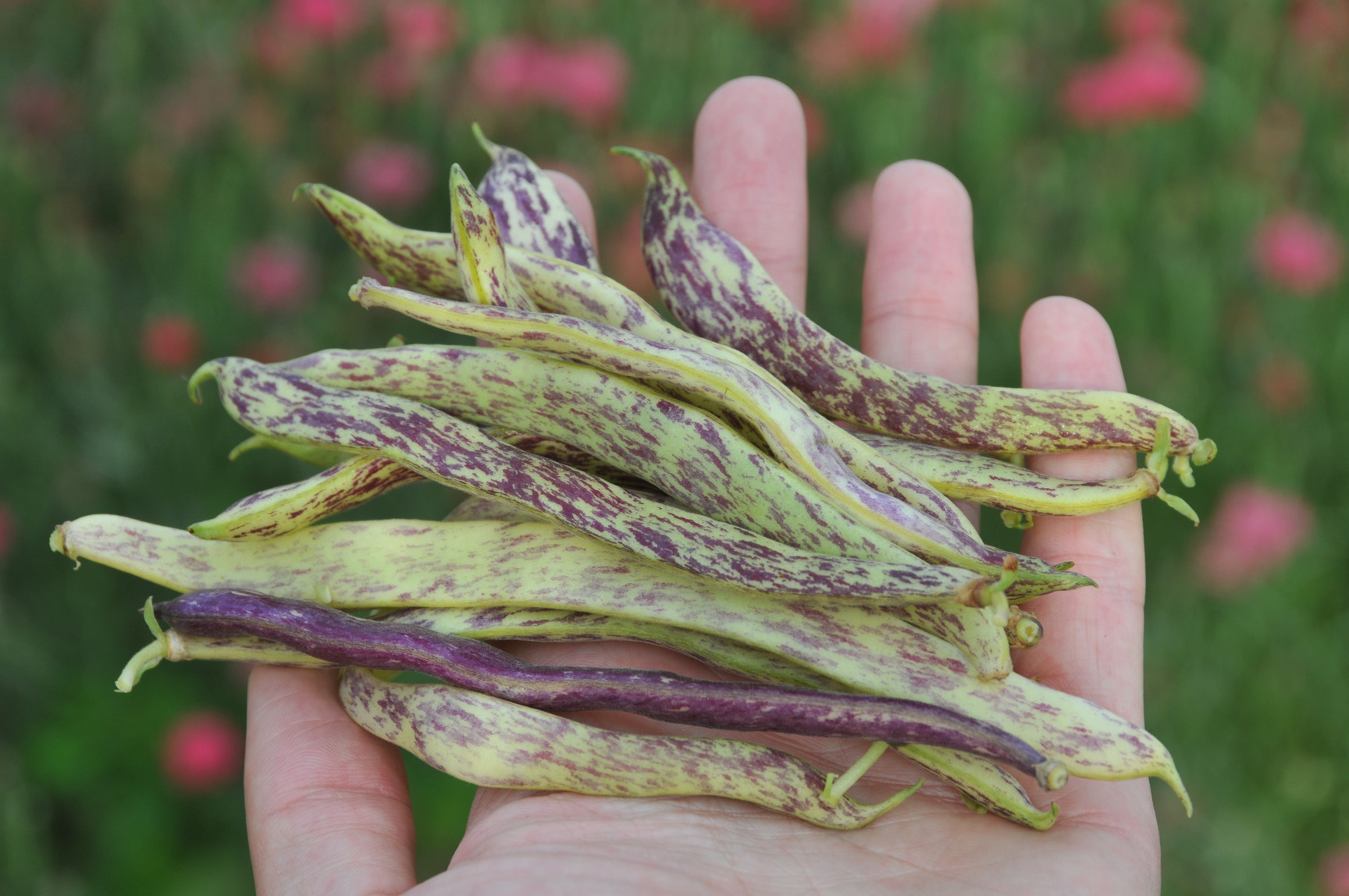
ADVERTISEMENT
Another cultivar of pole beans that I really like is scarlet runner beans. They produce a very flavorful pod, but the bonus is that they have beautiful flowers. The flowers are a mix of white and red petals. The humming birds and butterflies are very attracted to the blooms. Scarlet runner beans like cool weather, so plant as early as possible in the late winter or early spring depending on your location.
My pole beans have many leaves but no blossoms. Planted them around second week in April. I keep them well watered, have added a compos, but still no blossoms or beans. I live in Georgia. Help! Thank you.
It may be that there is too much nitrogen in the soil; nitrogen promotes leaf growth. Nitrogen can come from fertilizer, of course, but also compost and aged manure. This is the most common and reliable reason we know. You could get a soil test to confirm (or negate) this idea.
I have lots of blooms but no beans. The vines look healthy and have grown all over the trellis. Can they grow too dense to make?
There are a number of reasons that beans fail to set pods. Lack of pollinators. Too-high night-time temps. Uneven moisture. High temps and low humidity. And, believe it or not (experts tell us), too-fertile soil, due to too much nitrogen-containing materials (compost, manure, fertilizer etc.).
this is the second year in a row that my beans don't produce the plants grow taller than my poles but don't have any beans bad seeds?
The seeds may be fine; there are a number of reasons that beans fail to set pods. Lack of pollinators. Too-high night-time temps. Uneven moisture. High temps and low humidity. And, believe it or not (experts tell us), too-fertile soil, due to too much nitrogen-containing materials (compost, manure, fertilizer etc.).
try wormwood planted as a border around your garden--animals don't like it
Should I just start over,not adding quite as much composite. My soil has a lot of clay
hi, this is Deanna from Camden County Georgia, I have already planted green beans twice, both times they came up great, then I go out the next few days and one day they are gone, ate to the ground.Planted marigolds between each one the last time.Didnt help keep whatever got them away though.










